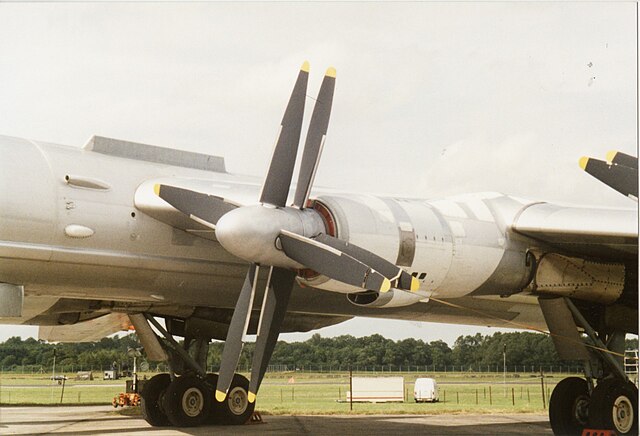The Douglas XB-42 Mixmaster was an experimental American bomber aircraft, designed for a high top speed. The unconventional approach was to mount the two engines within the fuselage driving a pair of contra-rotating propellers mounted at the tail in a pusher configuration, leaving the wing and fuselage clean and free of drag-inducing protrusions.
Douglas XB-42 Mixmaster
View of the contraprop and cruciform tail.
Rear view of the XB-42A in May 1947
XB-42A with podded 19XB-2 jets.
Contra-rotating propellers
Aircraft equipped with contra-rotating propellers (CRP) coaxial contra-rotating propellers, or high-speed propellers, apply the maximum power of usually a single piston engine or turboprop engine to drive a pair of coaxial propellers in contra-rotation. Two propellers are arranged one behind the other, and power is transferred from the engine via a planetary gear or spur gear transmission. Contra-rotating propellers are also known as counter-rotating propellers, although the term counter-rotating propellers is much more widely used when referring to airscrews on separate non-coaxial shafts turning in opposite directions.
Contra-rotating propellers on the Rolls-Royce Griffon-powered P-51XR Mustang Precious Metal at the 2014 Reno Air Races
Contra-rotating propellers of a Spitfire Mk XIX
One of the four contra-rotating propellers on a Tu-95 Russian strategic bomber
XB-35 Flying Wing showing its quartet of pusher contra-rotating propellers. The option was later discarded due to severe vibration in flight and later changed to traditional single rotating propellers.








